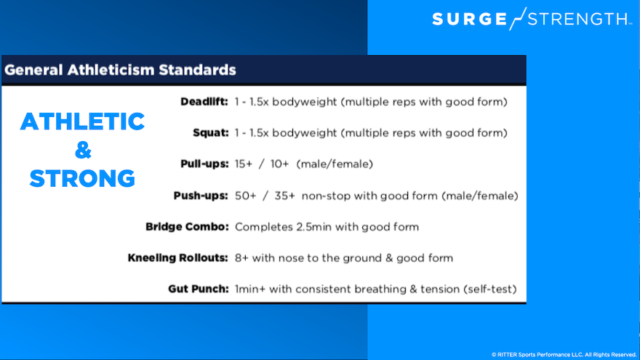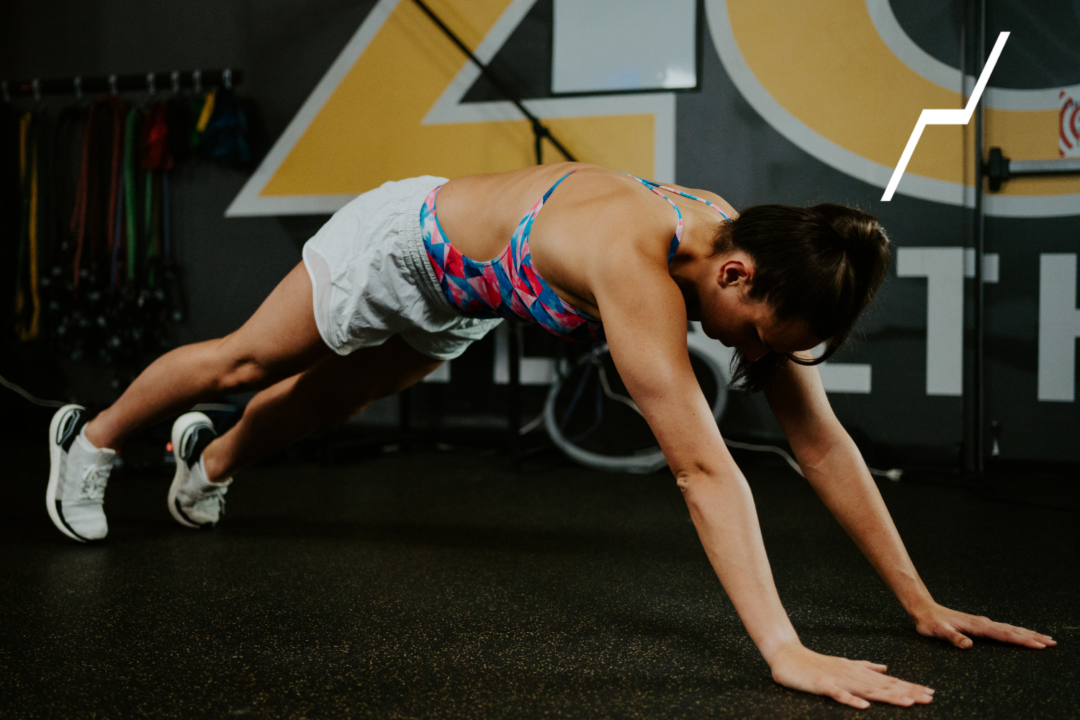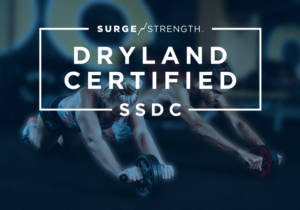Dryland workouts for high school swimmers can be a critical part of your program’s success. So the question is are you building potential in your high school athletes or capping it with your current dryland program? Dryland workouts for high schoolers can elevate a swimmer’s potential above and beyond what could be achieved without it. Dryland offers an opportunity to bond as a team while working hard towards goals and should be a memorable and educational experience for coach and swimmer. Hopefully, by the time swimmers get to high school dryland, they have a solid foundation and know just what to expect. If not, you must start by building a “grade school” foundation before moving onto anything “high school level”. The purpose of high school dryland is to equip athletes with skills for college swimming and for life. When implemented correctly, dryland opens more opportunities for swimmers to swim in college and evolve into the best athletes possible.
1) Set up A Successful Structure for Dryland Workouts for High School Swimmers
The structure of a high school dryland program should have both training and teaching principles. Sessions should have what are known as closed training concepts. This means there are defined sets and reps, training phases, and periodized workouts. This doesn’t mean dryland has to be boring or extremely hard. Leave room for open concepts such as fun and games from time to time as well.
First and foremost, make sure athletes know how to move well. Then, consider adding strength. Athletes at this stage need body awareness and mobility to progress to their highest potential. Keep your eyes on the bigger picture. It is better for athletes to progress slowly through exercises than to focus on short-term results that could lead to injury. Movement quality is essential for longevity and progress in strength and conditioning.
Keep programs simple and effective. Focus on 3 phases of programming: strength, power, and strength-power. Rotating through these 3 training phases gives athletes a great base of strength to take with them to college. It also teaches them how to train safely and efficiently if they end their swim career with high school.
2) Manage Your Training Time Wisely in Dryland Workouts for High School Swimmers
Having a structured plan for each training session is the best way to utilize time wisely. SURGE Strength recommends breaking dryland down into 3 main sections. First, incorporate function exercises. These movements warm the athletes up, activate their central nervous system (CNS), and train movement patterns desirable for swimming. Next, implement dynamic movement. This section is full of movements that increase mobility, power, and athleticism. Cap out the session with strength training. This is the meat of the dryland program. Here, athletes learn basic resistance training exercises that enhance their current training and prepare them for a collegiate strength and conditioning program. Here are the recommendations on how to map out an hour-long dryland workout for high school swimmers from the SURGE Strength Dryland Certification Curriculum:
– Function Exercises = 10-15 minutes
– Dynamic Movement = 10-15 minutes
– Strength Training = 30-40 minutes
3) Enhance Your Coaching
When coaching high-schoolers, dryland should be form-based rather than outcome-based. What we mean by this is that the focus should be more on the execution of an exercise rather than the results it provides. High school is the time for athletes to learn quality movement. To promote this, positively reinforce their attention to detail. Do not overemphasis PR’s or only praise the outcomes of the session. An example of form-based coaching is, “let me see how low you can get in the squat while keeping your form.” Rather than, “let’s see who can do the most squats in a minute.”
When setting up coaching cues, keep it simple. Choose just a couple of guidelines and avoid confusing athletes with lengthy explanations. Make sure you can perform each exercise in the plan yourself. Then, demonstrate it for them with proper form. Give them about 3 coaching cues for each exercise. To further engage the athletes, break them up into small groups, and have them self-grade each other’s form when appropriate using your 3 coaching cues.
4) Build Buy-in Dryland Workouts for High School Swimmers
A dryland program is only as good as the team’s execution of it. Keep an athlete-centered coaching model. Specifically, design your program to fit the team’s individual needs and involve your athletes in the planning process. Offering some give and take to the program, as well as keeping the athletes involved in the planning process, helps them take ownership of their training. They better understand the “why” of your program. They also execute the session better when they feel autonomous.
Try starting each session off with an overview. Laying out the goals and objectives of each session helps athletes understand your training expectations while also helping them feel in control of their workout. At the end of each session, help athletes transition and absorb what they worked on by asking some open-ended questions that promote self-reflection. For example, ask what they learned or what they thought they did well. This is also a great time to get some feedback on how athletes are feeling and gauge where dryland may need some adjustment. Lastly, set some ground rules for your sessions. Enforce athletes to work hard, have fun, and avoid talking when the coach is talking. Above all else, always end each dryland session on a high note to keep motivation up.
5) Set Goals for your Swimmers
Picture your athletes when they graduate from high school and your dryland program. At their championship meet, you see them powering through the water with a perfect streamline and a powerful kick. In order to achieve this image, an athlete’s level of strength and fitness needs to be good. They will also need to have a healthy self-esteem level. As a coach that cares about your athletes, you want to instill qualities such as mental toughness and coach-ability into your dryland program in order to achieve this vision. After all, these skills apply not just to swimming, but to life in general. Whether they swim in college or not, these are all great standards to implement from the start. Below are some physical standards to work towards in dryland. Otherwise, find creative ways to weave character development goals into your program using the tips we unpacked on coaching and structuring your dryland plan.

High school swimming is a pivotal chapter in almost every athlete’s career. It determines so much about a swimmer’s life skills, self-image, and can positively carry them into college swimming for those who choose to continue swimming. Dryland supports this process and defines what a strength and conditioning program looks like. Dryland is also an excellent opportunity to build character in your athletes and prepare them for success both in and out of the pool. Take time to reflect on what you want your athletes to learn from dryland. Think about the best way to improve your coaching, dryland structure, and build buy-in for your team. A quality dryland experience yields better athletes and elevates your abilities as a coach.
ENROLL IN A DRYLAND 101 COURSE FOR FREE
MORE DRYLAND RESOURCES FROM SURGE STRENGTH:
GET STARTED WITH A DRYLAND PROGRAM
LEARN ABOUT BECOMING SSDC

SURGE Strength’s Mission:
BUILD BETTER ATHLETES
GENERATE FASTER SWIMMERS
Courtesy of SwimSwam’s exclusive dryland training partner, SURGE Strength.
SURGE Strength, a strength training brand created by Chris Ritter, CEO of RITTER Sports Performance, aims to build better athletes and faster swimmers through dryland programs and educational courses.
Get started with a SURGE Strength Dryland Program or enroll in a dryland course in the SURGE Strength Academy today!










